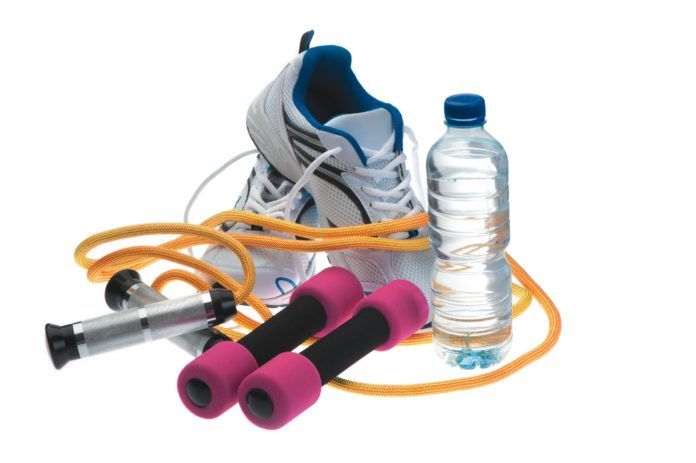© courtneyk | Getty Images

Exercising regularly can help prevent age-related decline in physical functioning and decrease risk of falls, osteoporosis, and frailty, but the recommended 150 minutes per week of moderate-intensity physical activity may seem daunting, especially for inactive older adults. While meeting these recommendations is best, a recent analysis by Tufts researchers suggests that even increasing physical activity by less than one hour a week can provide clinically significant benefits.
Results from the Lifestyle Interventions and Independence for Elders (LIFE) Study, the largest and longest randomized study of older adult exercise, were initially published in 2014. The study looked at the effect of increased exercise on the mobility of 1,365 sedentary men and women ranging in age from 70 to 89 years who were considered at high risk for mobility disorders. Participants were randomized to a physical activity intervention or a health education program. Those assigned to the physical activity intervention were required to attend two organized exercise sessions at a study center and exercise at home three to four times per week for the study duration of over two years. Exercise sessions involved 30 minutes of walking at moderate intensity, strength training focused primarily on the legs, 10 minutes of balance training, and flexibility exercises for large muscle groups. A goal of 150 minutes weekly was set for the exercise group, in accordance with current physical activity guidelines for older adults, and participants progressed gradually toward that goal depending on their initial fitness level.
Results showed a significant reduction in risk of mobility disability in the exercise group, even in participants with a lower level of functioning at the start of the study. “The published 2014 LIFE Study results demonstrated pretty definitively that physical activity can prevent functional disability in older age,” says Roger A. Fielding, PhD, associate center director at the Jean Mayer USDA Human Nutrition Research Center on Aging at Tufts University, director and senior scientist at the Nutrition, Exercise Physiology, and Sarcopenia Laboratory, and one of the lead investigators of the 2014 LIFE Study.
A recent secondary data analysis of the LIFE Study by Fielding and colleagues examined the amount of exercise required to achieve improvements in physical functioning. “Our 2017 analysis looked at whether there were identifiable benefits based on exercise dose,” says Fielding. “Did more physical activity result in greater improvements in, for example, mobility?” The analysis showed that older adults whose physical activity had increased the most did, in fact, have the most improvements in outcomes such as mobility and walking speed. However, a key finding of the recent analysis was that clinically meaningful reductions in risk of physical disability occurred with an increase of just one exercise session per week. Additionally, benefits associated with increased physical activity were not just found in the group assigned to the exercise intervention. Participants in the health education group who increased their physical activity—measured
by a fitness tracker—also had significant improvements in physical function and decreased disability risk. “Our analysis showed that the required amount of exercise to achieve substantial benefits for older adults at risk for physical disability is relatively small—only 56 minutes weekly,” says Fielding.
The results of the LIFE Study could eventually affect how exercise is prescribed for older adults by helping to inform the minimum amount needed to improve function and reduce risk of disability. “Our analysis adds even more evidence to the literature on exercising and aging, and also shows that, while more exercise is better, even a small increase in the amount of weekly exercise can have substantial benefits,” says Fielding.
While reaching for the recommended amount of physical activity is desirable, any increase in physical activity can be beneficial. The LIFE Study shows that even sedentary older adults can reap the benefits of increased physical activity, and that improved mobility and reduced risk of physical disability is possible with even a small increase in activity. When it comes to getting moving, it seems there really is no such thing as too little, too late.

To prevent age-related decline in physical ability, stay active or get moving. Every little bit helps!
-Walk
-Participate in an older-adult fitness class (start with chair exercise as necessary)
-Danceby yourself or with others
-Play golf (without a cart)
-Swim or try water exercise classes
-Play tennis or pickleball
-Garden, push-mow the lawn, or rake leaves
-Do yoga, tai chi, or qigong
-Climb stairs instead of taking the elevator or escalator
-Lift handheld weights
-Use weight machines
-Work with resistance bands
-Stretch daily
-Play Wii Fitness, or similar ‘exergames’





















